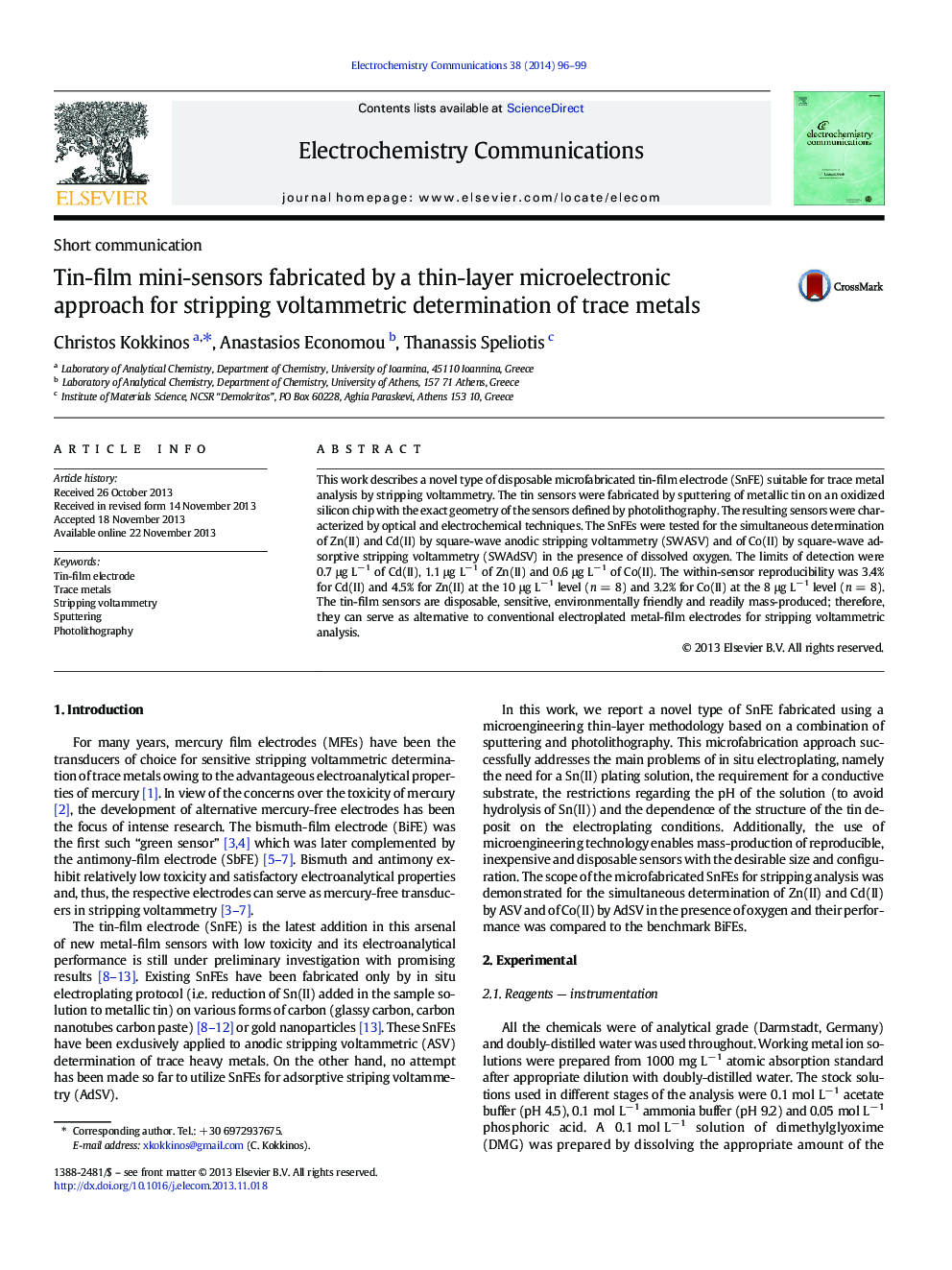| Article ID | Journal | Published Year | Pages | File Type |
|---|---|---|---|---|
| 179229 | Electrochemistry Communications | 2014 | 4 Pages |
•Tin electrodes were fabricated by a thin–layer microelectronic approach.•The electrodes were applied to detection of Co(II), Zn(II) and Cd(II) by SV.•The tin electrodes compared favorably with bismuth electrodes.•The tin electrodes could serve as a disposable sensors for on–site analysis.
This work describes a novel type of disposable microfabricated tin-film electrode (SnFE) suitable for trace metal analysis by stripping voltammetry. The tin sensors were fabricated by sputtering of metallic tin on an oxidized silicon chip with the exact geometry of the sensors defined by photolithography. The resulting sensors were characterized by optical and electrochemical techniques. The SnFEs were tested for the simultaneous determination of Zn(II) and Cd(II) by square-wave anodic stripping voltammetry (SWASV) and of Co(II) by square-wave adsorptive stripping voltammetry (SWAdSV) in the presence of dissolved oxygen. The limits of detection were 0.7 μg L− 1 of Cd(II), 1.1 μg L− 1 of Zn(II) and 0.6 μg L− 1 of Co(II). The within-sensor reproducibility was 3.4% for Cd(II) and 4.5% for Zn(II) at the 10 μg L− 1 level (n = 8) and 3.2% for Co(II) at the 8 μg L− 1 level (n = 8). The tin-film sensors are disposable, sensitive, environmentally friendly and readily mass-produced; therefore, they can serve as alternative to conventional electroplated metal-film electrodes for stripping voltammetric analysis.
Graphical abstractFigure optionsDownload full-size imageDownload as PowerPoint slide
